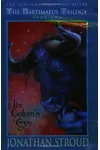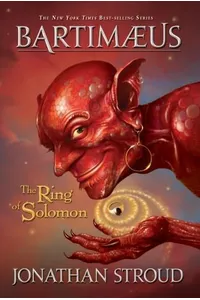Step into the magical chaos of the Bartimaeus Sequence, where a sharp-tongued djinn and a young magician shake up an alternate London ruled by power-hungry sorcerers! Written by Jonathan Stroud, this young adult fantasy series blends witty humor, political intrigue, and heart-pounding action, captivating readers with its unique take on magic and rebellion.
At its core, the series follows Nathaniel, a gifted but ambitious apprentice, and Bartimaeus, a 5,000-year-old djinn with a knack for sarcasm and a grudge against servitude. Their dynamic—equal parts banter and betrayal—sets the stage for a thrilling adventure through a world where magicians summon spirits to maintain their iron grip on society.
How Bartimaeus Began
Jonathan Stroud, a former editor with a passion for fantasy, crafted the Bartimaeus Sequence after his earlier works like Buried Fire hinted at his knack for mythology and magic. Inspired by folklore and history, Stroud imagined a London where magicians, not monarchs, hold sway, drawing on real-world power dynamics to ground his alternate universe. The first book, The Amulet of Samarkand, hit shelves in 2003, kicking off a trilogy that grew into a beloved series with a prequel, The Ring of Solomon, in 2010.
Stroud’s goal was to subvert traditional fantasy tropes, focusing on the ethics of power and the perspectives of both oppressors and the oppressed. Bartimaeus’s irreverent footnotes, packed with historical quips and cheeky asides, became a hallmark of the series, born from Stroud’s love for layered storytelling.
The Heart of Bartimaeus
The Bartimaeus Sequence spans four books, each weaving a tale of magic and rebellion. The Amulet of Samarkand (2003) introduces Nathaniel, a 12-year-old apprentice seeking revenge against a cruel magician, Simon Lovelace. He summons Bartimaeus to steal a powerful artifact, only to stumble into a web of espionage and betrayal. The Golem’s Eye (2004) ramps up the stakes as Nathaniel, now a junior magician, faces a mysterious golem and a growing resistance led by the fierce Kitty Jones.
Ptolemy’s Gate (2005) brings the trilogy to a climactic close, with Nathaniel, Bartimaeus, and Kitty uniting against a catastrophic threat to London’s magical order. The prequel, The Ring of Solomon (2010), takes readers to ancient Jerusalem, where Bartimaeus navigates the court of King Solomon with his trademark wit. Themes of power, loyalty, and freedom run deep, with the series critiquing class divides and the cost of ambition through its alternate London setting—a gritty, magical dystopia where spirits like djinn are enslaved to human will.
Stroud’s style shines through Bartimaeus’s sardonic narration and the alternating perspectives of Nathaniel and Kitty, creating a rich tapestry of viewpoints. The series blends fast-paced action with moral complexity, appealing to readers who love fantasy with a side of social commentary.
Why Bartimaeus Resonates
The Bartimaeus Sequence stands out for its bold take on fantasy, earning praise for its complex characters and sharp wit. Fans on platforms like Goodreads laud its originality, often comparing it favorably to Harry Potter for its darker, more political edge. The series has sold over 6 million copies worldwide and inspired a graphic novel adaptation of The Amulet of Samarkand, cementing its place in young adult fantasy.
Its lasting appeal lies in its relatable themes—questioning authority, navigating loyalty, and finding one’s place in a flawed world. Bartimaeus’s humor and Nathaniel’s flawed humanity make the series a timeless read, while its exploration of power dynamics feels eerily relevant today.
- Publication Years: 2003–2010
- Books: 4 (3 in the trilogy, 1 prequel)
- Setting: Alternate London and ancient Jerusalem
- Genre: Young Adult Fantasy
Grab The Amulet of Samarkand and dive into Bartimaeus’s spellbinding world of magic, mischief, and rebellion!




